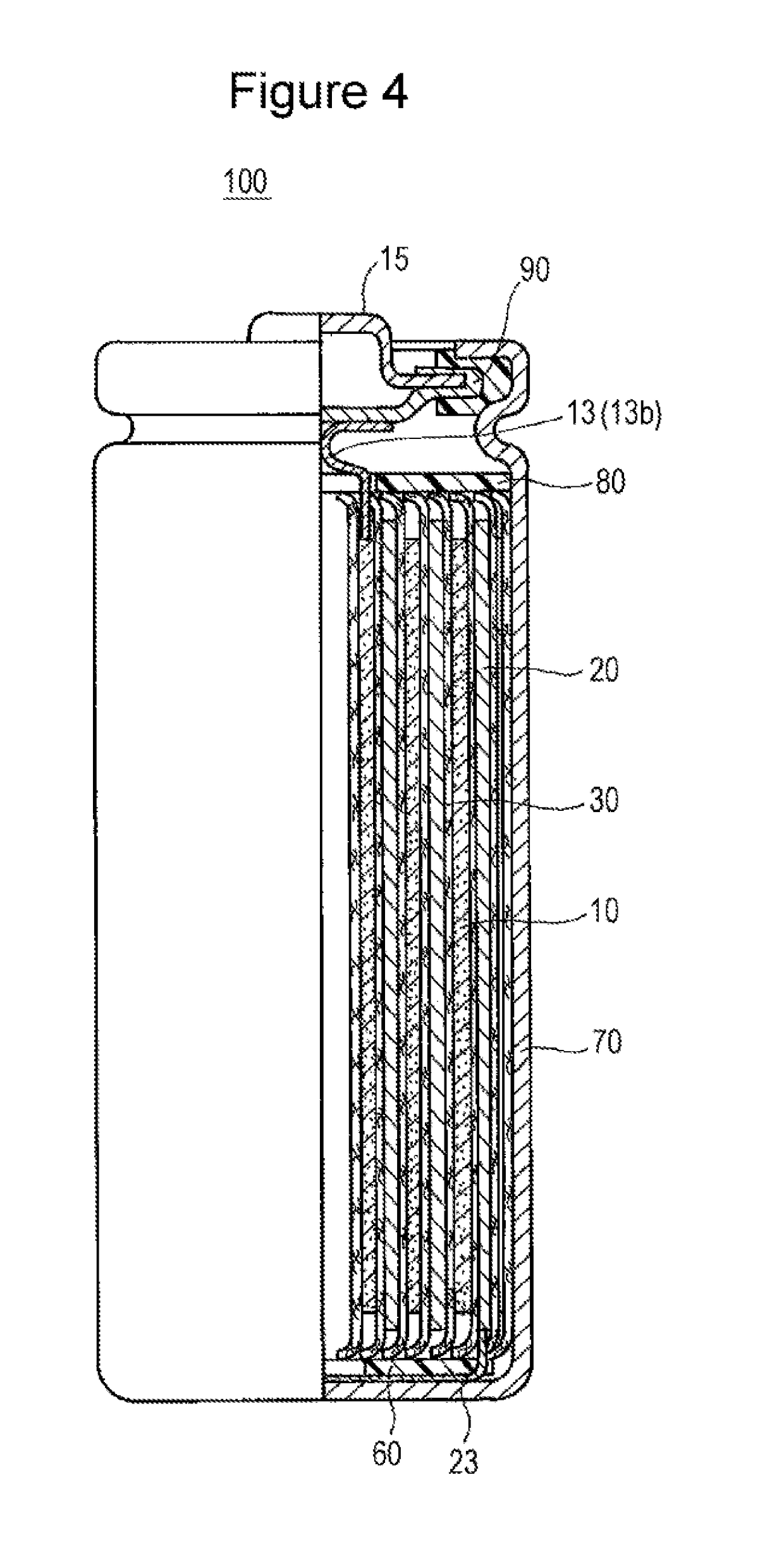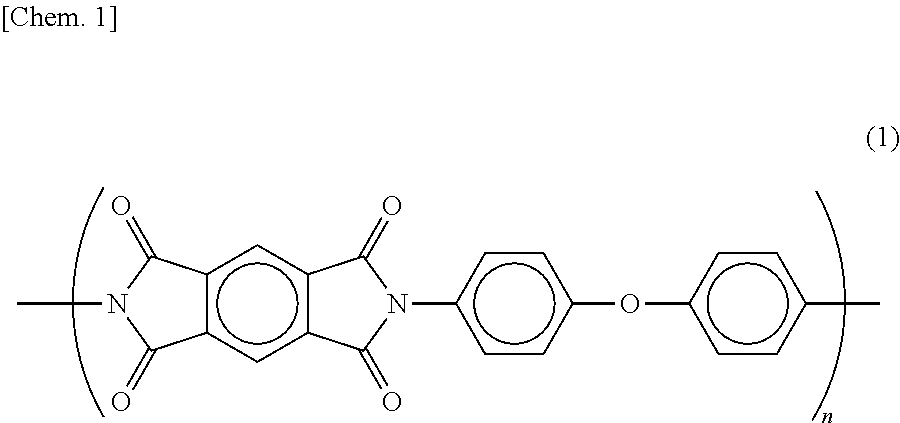Nonaqueous electrolyte secondary battery
- Summary
- Abstract
- Description
- Claims
- Application Information
AI Technical Summary
Benefits of technology
Problems solved by technology
Method used
Image
Examples
example 1
[0075](1) Formation of Positive Electrode
[0076]A positive electrode paste was prepared by mixing 100 parts by mass of LiNi0.82Co0.15Al0.03O2 used as a positive electrode active material, 1.0 parts by mass of acetylene black, 0.9 parts by mass of polyvinylidene fluoride (binder), and a proper amount of NMP. The resultant positive electrode paste was uniformly applied on both surfaces of an aluminum foil having a thickness of 20 μm and used as a positive electrode current collector, dried, and then rolled to form a strip-shaped positive electrode having a width of 58 mm. In addition, a slit-shaped exposed portion was provided on both surfaces of the positive electrode near the center in the longitudinal direction thereof so as to expose the positive electrode current collector from one of the ends to the other end in the width direction. The width W of the exposed portion was 6.5 mm.
[0077]Next, a strip-shaped positive electrode lead made of aluminum and having a width of 3.5 mm and a ...
example 2
[0092]A battery was formed by the same method as in Example 1 except that the contents of artificial graphite and SiO in the negative electrode active material were changed to 90 parts by mass and 10% by mass, respectively.
example 3
[0093]A battery was formed by the same method as in Example 1 except that the contents of artificial graphite and SiO in the negative electrode active material were changed to 95 parts by mass and 5% by mass, respectively.
PUM
 Login to View More
Login to View More Abstract
Description
Claims
Application Information
 Login to View More
Login to View More - R&D
- Intellectual Property
- Life Sciences
- Materials
- Tech Scout
- Unparalleled Data Quality
- Higher Quality Content
- 60% Fewer Hallucinations
Browse by: Latest US Patents, China's latest patents, Technical Efficacy Thesaurus, Application Domain, Technology Topic, Popular Technical Reports.
© 2025 PatSnap. All rights reserved.Legal|Privacy policy|Modern Slavery Act Transparency Statement|Sitemap|About US| Contact US: help@patsnap.com



